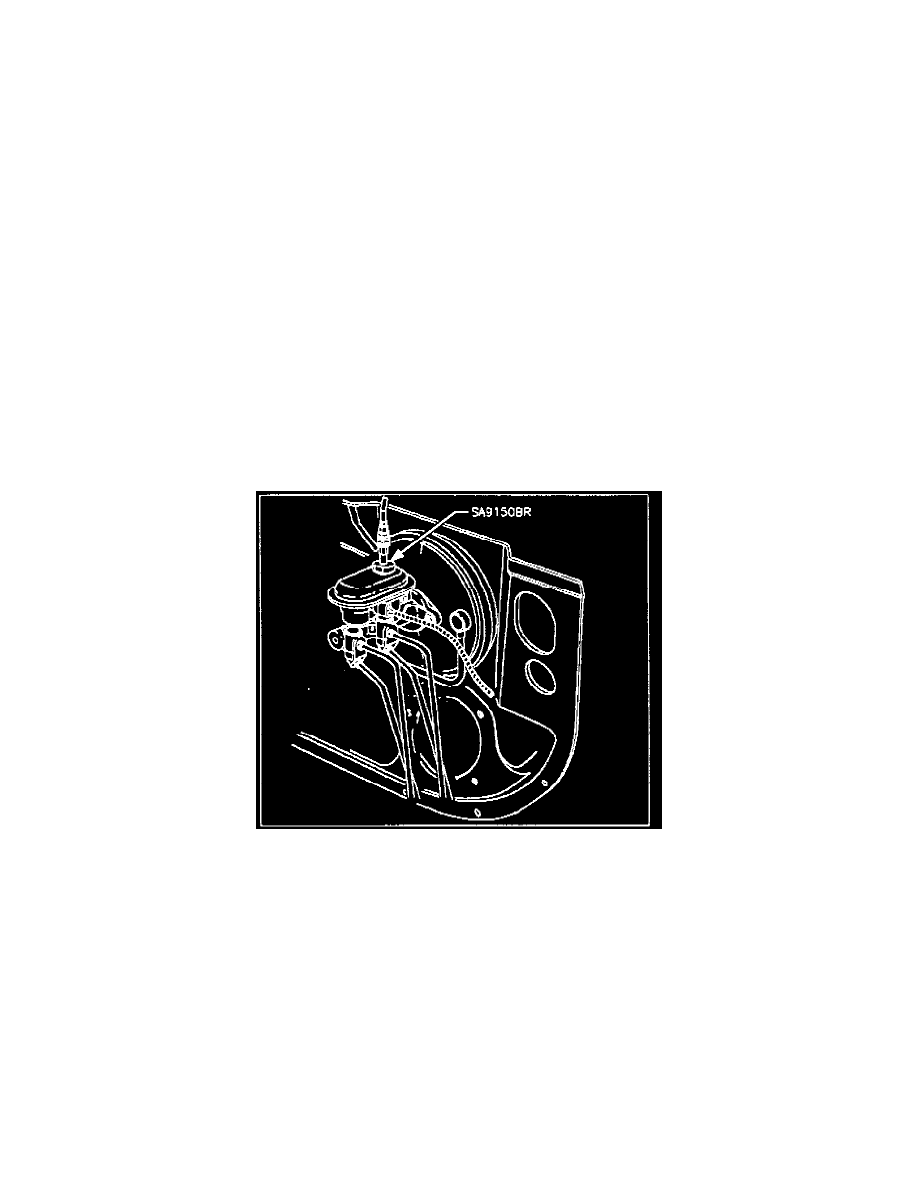SW1 L4-1.9L SOHC VIN 8 (1996)

Brake Bleeding: Service and Repair
Without ABS System
Manual
CAUTION: Brake fluid is corrosive to painted surfaces. Care must be taken not to allow brake fluid to come in contact with painted
surfaces on vehicle.
NOTE: When bleeding the brake system, always bleed right rear wheel circuit first, followed by the left front, left rear and, finally, right front.
1. Fill master cylinder reservoir with DOT 3 type brake fluid. Keep reservoir at least half full during bleeding procedure.
2. If master cylinder is suspected to have air trapped inside, it must be bled before bleeding brake lines. Bleed master cylinder as follows:
a. Depress brake pedal slowly one time and hold.
b. Loosen front brake line at master cylinder and allow brake fluid to flow from front master cylinder port, then tighten front brake line to master
cylinder.
c. Repeat sequence until all air is removed from master cylinder bore.
3. Loosen, then slightly retighten bleeder valves at all four wheels. Repair any broken, stripped or frozen valves at this time.
4. Proceed to appropriate wheel first and follow RR-LF-LR-RF bleeding sequence.
5. Place transparent tube over bleeder valve, then allow tube to hang down into transparent container. Ensure end of tube is submerged in clean brake
fluid.
6. Instruct an assistant to slowly depress brake pedal one time and hold.
7. Crack open bleeder valve, purging air from cylinder. Retighten bleeder screw and slowly release pedal.
8. Repeat steps 6 and 7 until all air is bled from system.
9. Check fluid level after bleeding each wheel and fill as necessary.
Pressure
Fig. 9 Brake Pressure Bleeder Adapter Installation.
CAUTION: Brake fluid is corrosive to painted surfaces. Care must be taken not to allow brake fluid to come in contact with painted
surfaces on vehicle.
NOTE: When bleeding the brake system, always bleed right rear wheel circuit first, followed by the left front, left rear and, finally, right front.
Pressure bleeding equipment must be the diaphragm type. It must have a rubber diaphragm between the air supply and the brake fluid to prevent
air, moisture and other contaminants from entering brake system.
1. Clean brake fluid reservoir cap and area around cap, then remove cap.
2. Fill master cylinder reservoir with DOT 3 type brake fluid.
3. Install bleeder adapter tool No. SA9150BR, or equivalent, on brake fluid reservoir, Fig. 9.
4. Connect pressure bleeder to adapter and set pressure to 20-25 psi.
5. Loosen front brake line at master cylinder and allow brake fluid to flow from front master cylinder port until all air is bled, then tighten front
brake line to master cylinder.
6. Open each bleeder valve until all air is bled, then tighten bleeder screw.
7. Remove pressure bleeder and ensure fluid level is full.
